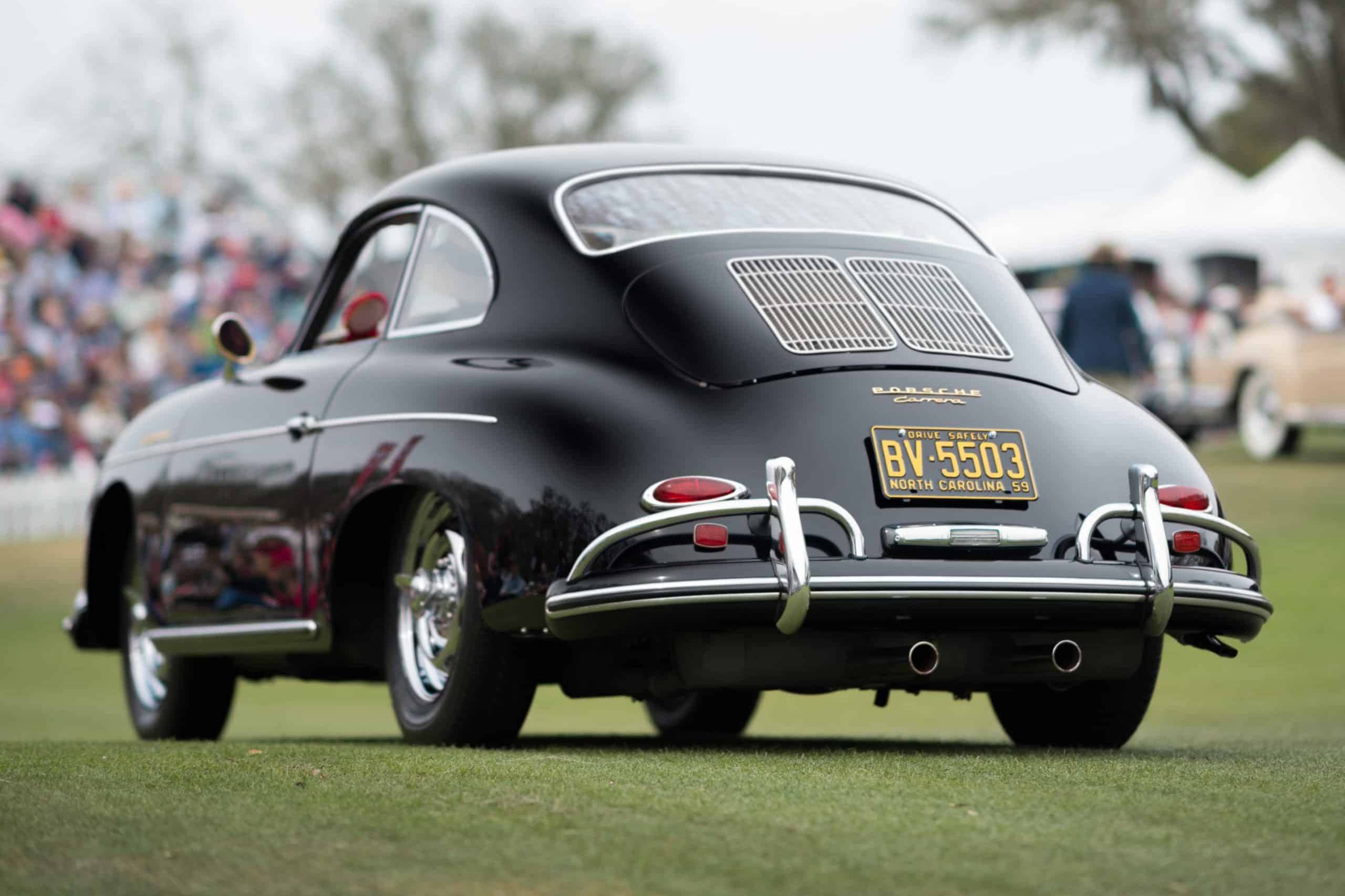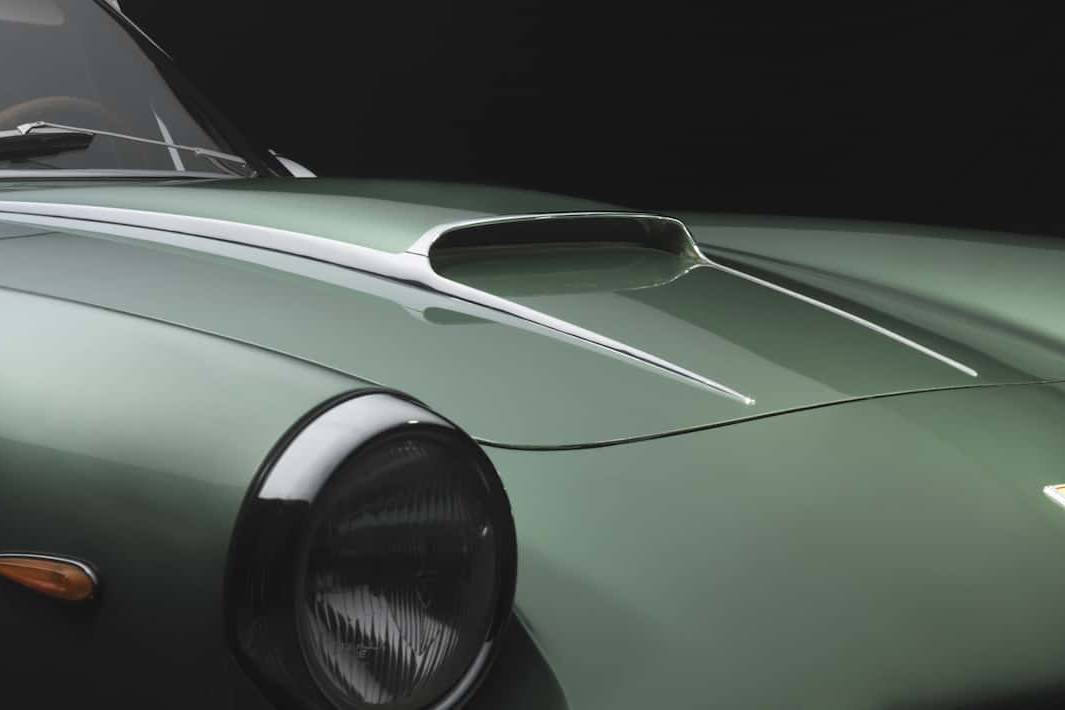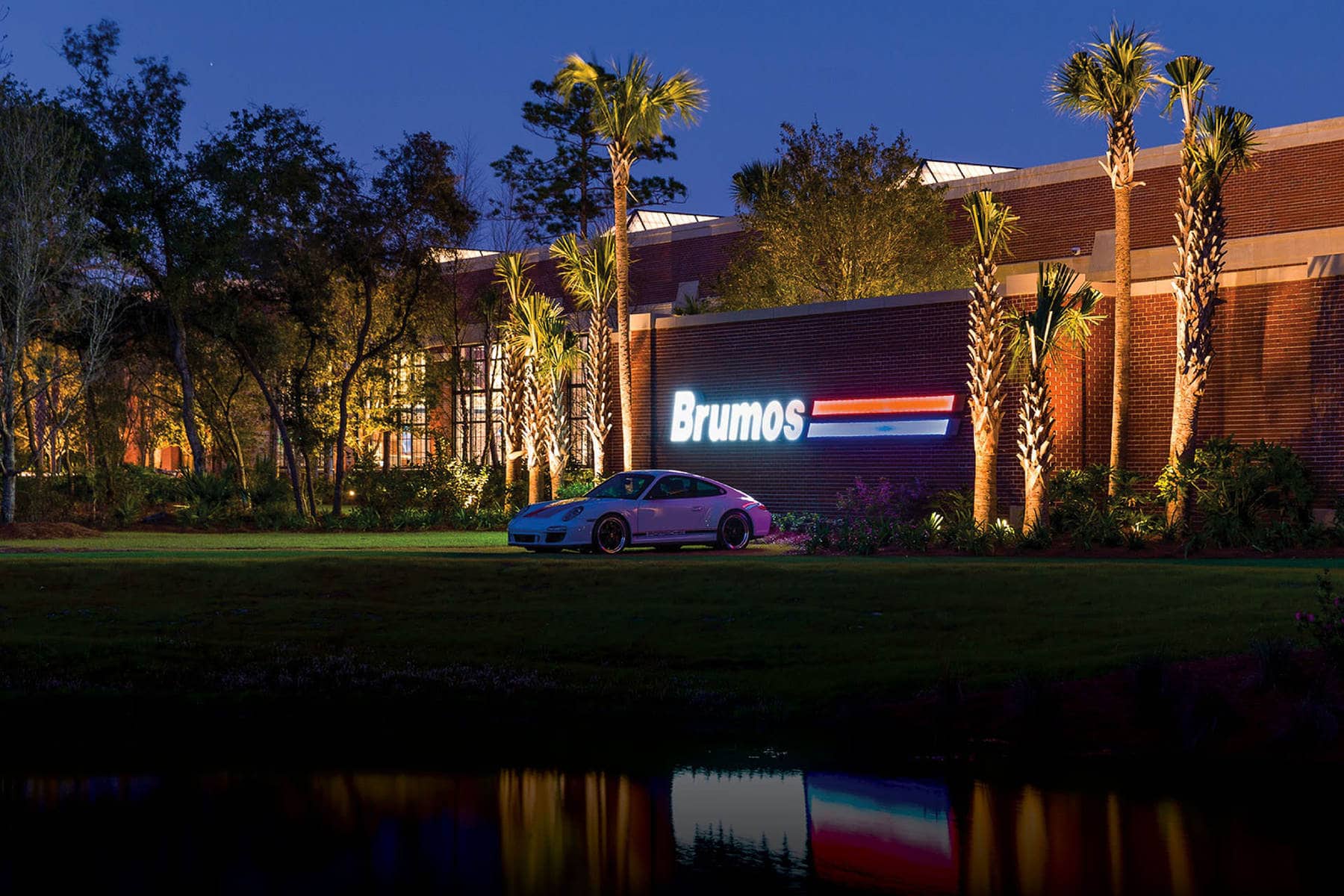
The Brumos Collection
A fabulous display of Miller and Porsche racing cars in a jewel-like setting
BY: KEN GROSS
PHOTOS: BRUMOS COLLECTION
If you’re a Porsche enthusiast, you know the Brumos name, and you’d recognize its distinctive livery – legions of orange Porsches, and then all-white cars with a distinctive red and blue parallel “sweep”.
Beginning in 1971, and driven by luminaries like Peter Gregg, Jim Busby and Hurley Haywood, to name a few, Brumos’ racers won the Daytona 24-Hour four times and dominated classes for years. The name behind this successful racing enterprise was Hubert Brundage (the “BRU” in Bru/mos Motors), who started it all off in 1953 with a Volkswagen dealership, then opened a Porsche store and began competing in Porsches. Over time, Peter Gregg, Bob Snodgrass and ultimately Dano Davis, made Brumos a sales leader, not just with Porsche, but offering Mercedes-Benz and Lexus, as well. And along the way, a collection of great cars came together, but it wasn’t readily available to the public – until now.

The collection – which included many racing Porsches — was locked away in a warehouse in Jacksonville near the former Brumos Porsche dealership. You might have been able to see it if you knew someone, and occasionally one of the cars would appear at Rennsport or a Concours, but a look inside was a coveted prize. That changed in late January 2020, with the opening of a sparkling new 35,000 sq. ft. building, built with repurposed old bricks, that pays homage to a 1924 Jacksonville Ford Motor Company assembly plant. “I’d always liked that building, with all of its skylights and glass,” says founder Dano Davis, “so that was our model for the museum.”
Fully half of the museum is devoted to displaying the impressive Brumos collection of Porsche racecars. But there’s a lot to see before the Stuttgart-inspired section begins.
Visitors enter the airy and sunlit main gallery and immediately encounter three impressive classic cars that have strong links to racing. There’s a 1929 Duesenberg Model J with a custom Murphy roadster body, an unrestored 1930 Cord L-29 Town Car, also by Murphy, that belonged to Hollywood film sensation, Dolores Del Rio, and a 1939 Alfa Romeo 8C2900 Lungo roadster, really a thinly-disguised Grand Prix car with a sleek body by Carrozzeria Touring.
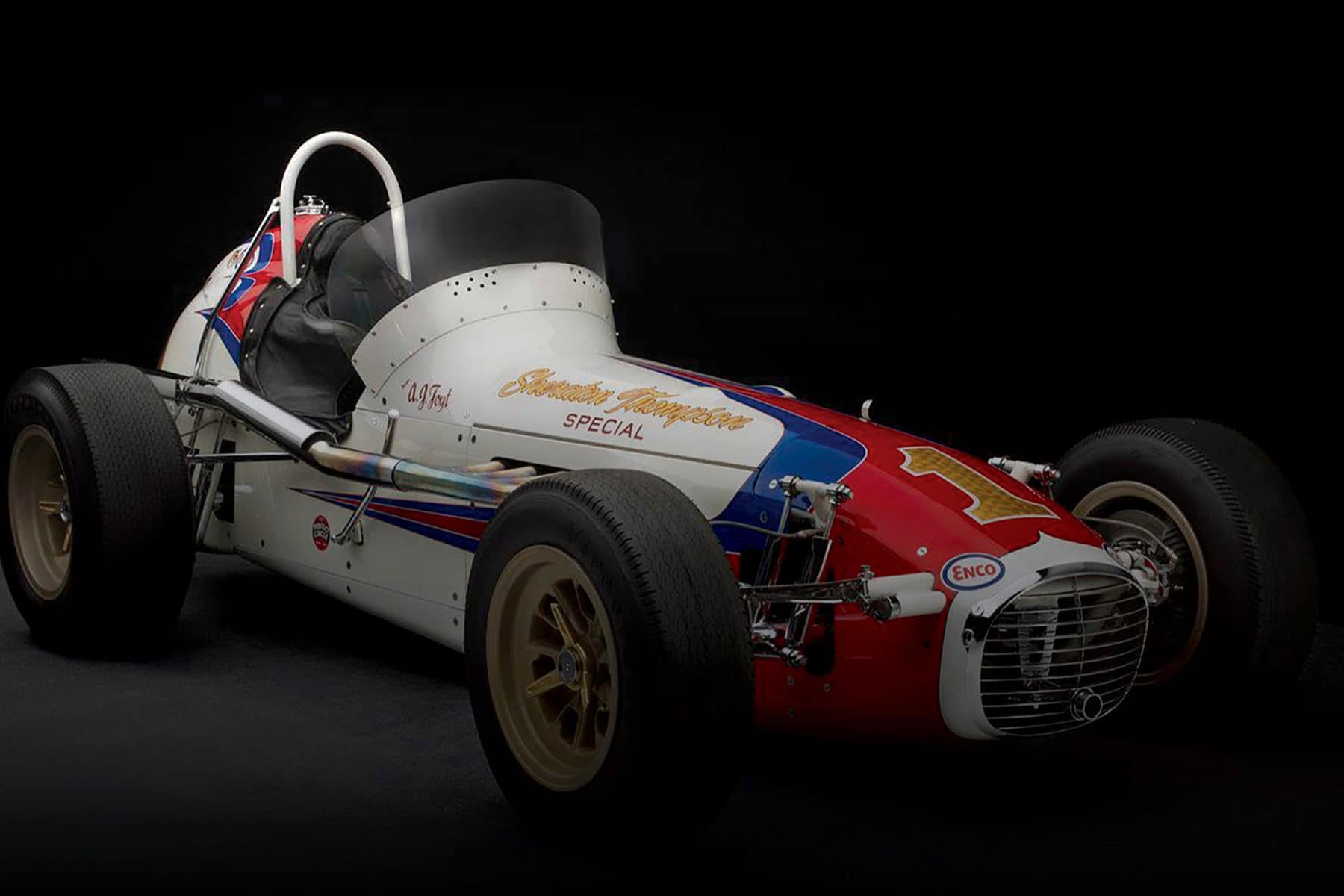
Next, there’s section of Millers, considered America’s most innovative and successful racecars in the 1920’s and 1930’s. Harry Arminius Miller, a clever Wisconsin engineer/inventor, made his fortune developing and selling high-performance carburetors. When “Wild Bob” Burman’s Peugeot engine needed comprehensive repairs in 1914, Miller’s shop did the work, and Harry adapted the French motor’s then-radical twin-cam technology to a series of racing engines that were virtually unbeatable. (The museum’s 1914 Peugeot L45 Grand Prix racer, is a sister car, and one of just two survivors). After setting up shop in Los Angeles, Miller began building successful racecars that won the Indy 500 six times, from 1923 to 1934.
Dano Davis explains his love for Millers this way: “Harry Miller and his men were inventing and creating these cars, with their brains and their hands, not just updating something.” And Davis has one of the best Miller collections extant, from a 1920 TNT Special, one of the first Millers ever built, a 1923 122 Grand Prix car, raced in Europe by Count Louis Zborowsky of “Chitty-Chitty-Bang-Bang” fame, plus ‘20s and ‘30s-era Miller Indy cars, including the lowslung, innovative-for-its-day, Armacost Special, a 1929 front-wheel-drive 91, along with a pair of striking rear-drive 122’s and several complex, centrifugally-supercharged Miller twin-cam engines, artfully displayed on specially-sculpted stands.

A front-drive Miller 91 was capable of astounding 140+-mph speeds on the towering, steeply banked board track speedways of the era. A small diorama shows the location of every board track in the US, from Altoona, PA, to Beverly Hills, and a second larger diorama presents a restored 1923 Miller 122 Jr. 8 Special, in a life-sized board track setting. Of special interest is a futuristic 148-cid, supercharged 4-cam, horizontally-opposed, flat 8. Recovered from a racing hydroplane, after it sank in 1928, it looks like a radical engine Professor Porsche would have built, perhaps for an Auto-Union.
Stroll past several more Indy cars including one of the legendary 1946 Kurtis NOVI V-8’s and A.J. Foyt’s 1962 Wally Meskowski Champ car, and now you’re in Porsche territory. You’re met by Jo Siffert’s 1968 Porsche 908 LH, and it’s adjacent to a 1970 Gulf-Porsche 917K that was used by Steve McQueen in his Le Mans movie. Hurley Haywood‘s 1972 917-10 and his 1986 962 – a car that he shared with A.J. Foyt and Al Unser, Jr. — lead a lineup that includes Peter Gregg’s a 200+mph 917-10 Can Am car, Gregg’s last race car, a Porsche 935, a Porsche 959 and a gaggle of racing 911’s, including the 1975 “Ecurie Escargot” 911 RSR. There’s a pristine 550 Spyder, and a gigantic Porsche transporter built by Mercedes-Benz. A sleek red 1953 Porsche 356 is a reminder of Brumos’ roots. Glass cases behind the cars display the countless trophies and awards won by the Brumos team over the years. On the walls, photographs track the company’s storied history through its iconic drivers. There’s even a Porsche tractor.
Porsche racing cars were considered “giant killers” because, despite their small displacement engines, they conquered larger competitors from Daytona to Le Mans. When the 917K appeared, with an engine bigger than anything Porsche offered in a road-going car, it was a total surprise to Ferrari and other rivals. From the 356’s through the later larger cars, the Brumos Collection is a primer in Porsche’s progress. It’s interesting to consider the work of Ferdinand Porsche and his son Ferry, alongside the earlier accomplishments of Harry Miller. Both eponymous marques proved their mettle in the crucible of racing. Both owe much to the determination and genius of their founders. Not surprisingly, Porsche and Miller complement one another beautifully in this setting.
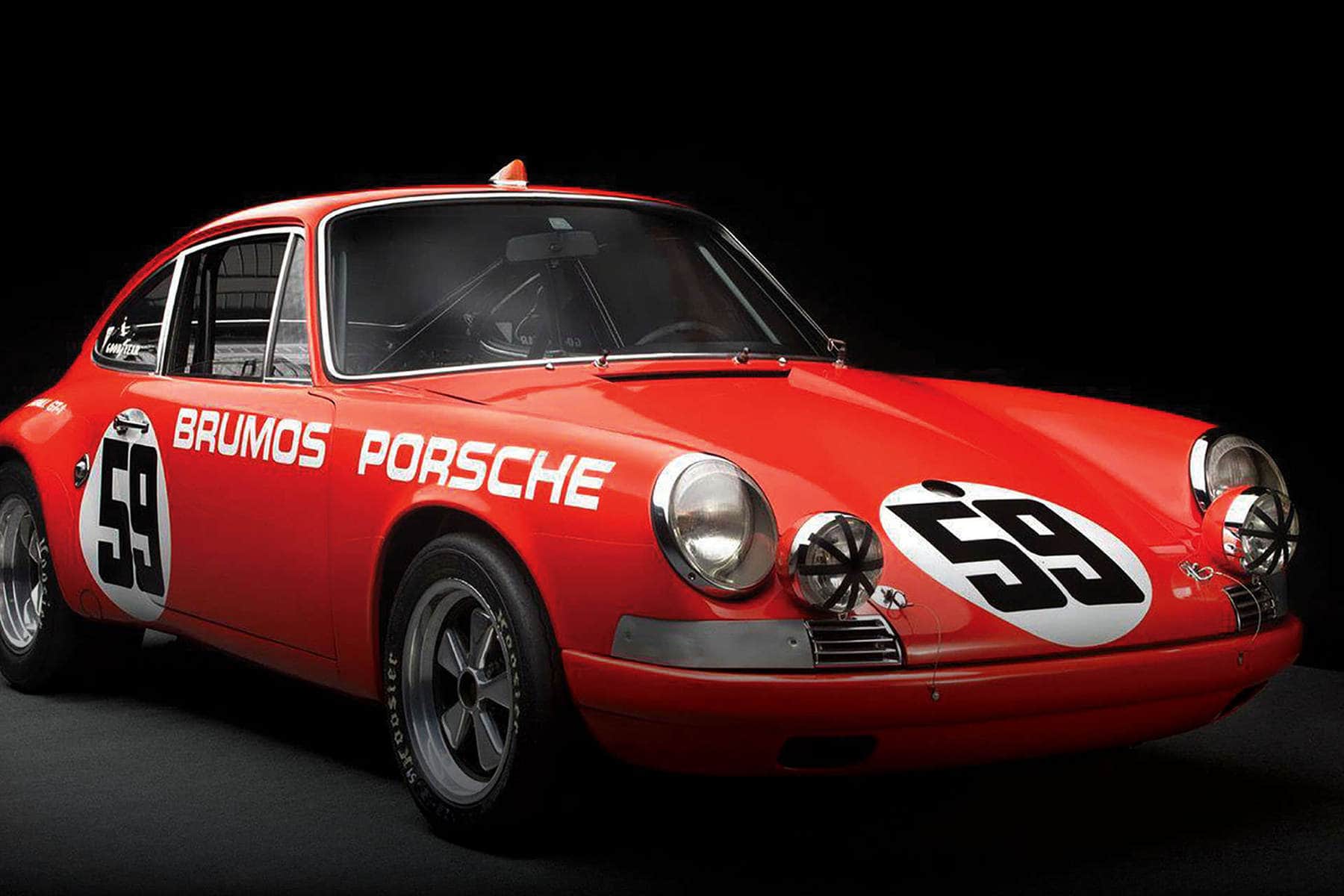
There’s much to see and learn here; the cars are very accessible, with minimal stanchioning; and the displays are augmented by special, i-Pad-like interactive touch screen video kiosks that present lots of information, in as much detail as you’d like. In contrast with many fine art museums that utilize tiny 50-to-100-word ‘tombstone’ labels, the Brumos Collection wants you to learn the stories behind the cars and the people. And they make the process enjoyable. The exhibition didactics, which include text and wonderful historic images, were organized by Mary Seelhorst, a talented, Detroit-based museum exhibit developer and writer Her credits include work for The Henry Ford, and the Ford Piquette Avenue Plant Museum. Mary was assisted by her friend, Jean Jennings, the former editor of Automobile Magazine.
“We weren’t sure how people would use the kiosks at first, “Seelhost says, “so we wrote the copy in such a way as to entice people to read further. Visitors read more if there’s less,” she explains, “so you read a short page, then scroll onto the next. Experts know most of the material. We felt it was our job to make it interesting for those who don’t.”
Dano Davis, the former majority owner of Brumos Porsche and the museum’s founder, is a modest man of great taste where racing cars are concerned. “We’ve had a very good response so far,” he says. “Brumos has a worldwide reputation, and we always say, ‘if you’re going to do something, do it right.’” There are about three dozen cars on display, countless artifacts and trophies — and those enticing kiosks. The visitor’s guide for Jacksonville suggests planning one to two hours for a visit.
I’d suggest much more.


